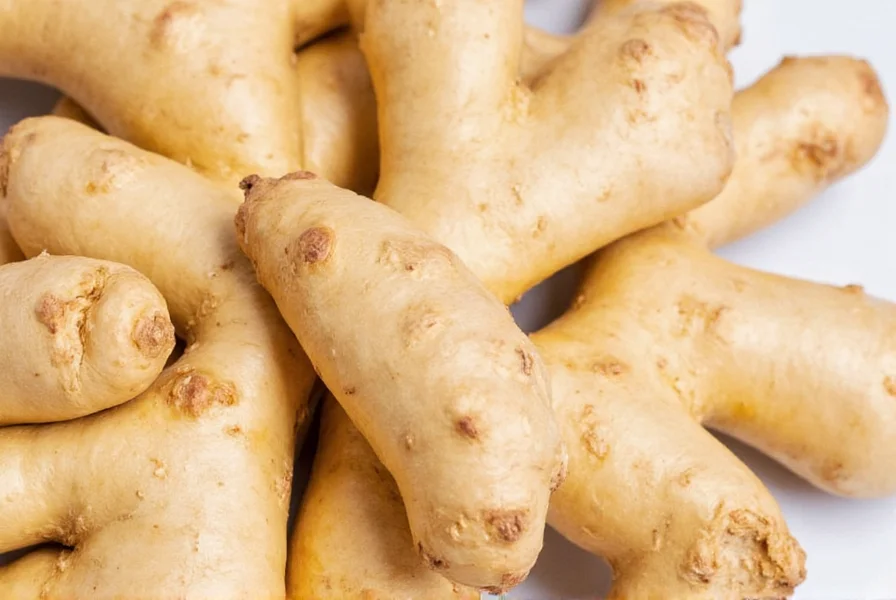Zee ginger refers to Zingiber, the botanical genus name for ginger plants, particularly Zingiber officinale, the common culinary and medicinal ginger root. This terminology clarification addresses frequent confusion between the colloquial term “ginger” and its precise botanical classification.
Many people searching for “zee ginger” encounter confusion about terminology. The phrase “zee ginger” typically represents a phonetic spelling of “Z ginger,” referring to Zingiber, the scientific genus encompassing ginger species. Understanding this botanical terminology provides clarity for gardeners, chefs, and health enthusiasts seeking accurate information about this versatile plant.
Understanding Ginger's Botanical Classification
Ginger belongs to the Zingiberaceae family, with Zingiber officinale being the most widely cultivated species for culinary and medicinal use. The “zee” in “zee ginger” corresponds to the “Z” in Zingiber, which is pronounced “Zin-ji-ber” (with “Z” sounding like “zee” in American English).

Common Ginger Varieties and Their Characteristics
While Zingiber officinale dominates global production, several ginger varieties serve different purposes:
| Variety | Characteristics | Primary Uses |
|---|---|---|
| Common Ginger (Zingiber officinale) | Yellowish flesh, stringy texture, pungent flavor | Culinary, medicinal |
| African Ginger | Darker skin, stronger heat | Traditional medicine |
| Galangal (Alpinia galanga) | Less juicy, pine-like aroma | Asian cuisine |
| Shell Ginger (Alpinia zerumbet) | Ornamental flowers, mild flavor | Landscaping, mild culinary use |
Culinary Applications of Zingiber Officinale
Chefs worldwide value ginger for its complex flavor profile that ranges from sweet and floral to sharp and pungent depending on preparation. Fresh ginger root contains gingerol, the compound responsible for its characteristic heat, which transforms into zingerone when cooked, creating a mellower flavor.
Professional kitchens utilize different ginger preparations for specific effects:
- Young ginger: Milder flavor, often used pickled or in delicate dishes
- Mature ginger: More fibrous with intense heat, ideal for spice pastes
- Candied ginger: Preserved in sugar syrup for desserts
- Ginger powder: Concentrated flavor for baking and spice blends
Scientifically Supported Health Benefits
Research validates many traditional uses of ginger. Multiple studies confirm ginger's effectiveness for:
- Nausea relief: Particularly effective for morning sickness and motion sickness
- Inflammation reduction: Gingerols demonstrate anti-inflammatory properties comparable to some medications
- Digestive support: Stimulates digestive enzymes and gut motility
- Muscle pain reduction: Regular consumption decreases exercise-induced muscle soreness
A 2023 meta-analysis published in the Journal of Medicinal Food confirmed that consuming 1-1.5 grams of ginger daily significantly reduces nausea symptoms without adverse effects. However, individuals taking blood thinners should consult physicians before consuming therapeutic doses of ginger.
Selecting and Storing Ginger Properly
Choosing quality ginger directly impacts culinary results. Look for these characteristics when selecting fresh ginger:
- Firm texture without soft spots or wrinkles
- Smooth, shiny skin (avoid shriveled specimens)
- Strong ginger aroma when scratched
- Thin skin indicates younger, more tender ginger
Proper storage extends ginger's shelf life significantly. Store unpeeled ginger in an airtight container in the refrigerator's vegetable drawer for 2-3 weeks. For longer preservation, freeze whole ginger roots and grate directly from frozen when needed. This method maintains flavor compounds better than refrigeration alone.

Growing Ginger at Home Successfully
Growing ginger requires specific conditions but yields rewarding results. The process of cultivating Zingiber officinale at home involves:
- Selecting fresh, plump ginger rhizomes with multiple growth buds
- Planting in well-draining, slightly acidic soil (pH 6.1-6.5)
- Maintaining warm temperatures (75-85°F) and high humidity
- Providing partial shade or filtered sunlight
- Watering consistently without waterlogging
Harvesting typically occurs 8-10 months after planting when leaves yellow and die back. Home gardeners can harvest “green ginger” earlier for more delicate flavor, though full maturity develops the characteristic pungency associated with mature ginger.
Addressing Common Ginger Misconceptions
Several myths persist about ginger that deserve clarification. Many people searching for “zee ginger information” encounter inaccurate claims. Evidence shows:
- Ginger doesn't “cure” cancer but may support conventional treatments
- Fresh ginger contains more active compounds than dried ginger
- Ginger's heat comes from gingerols, not capsaicin (found in chili peppers)
- Organic ginger doesn't necessarily contain more beneficial compounds
Understanding the distinction between Zingiber as a botanical term and “ginger” as the common name helps consumers access accurate information about this valuable plant. Whether you're exploring “different types of ginger plants” or seeking “medicinal uses of zingiber officinale,” precise terminology leads to better research outcomes.
What does “zee ginger” actually refer to?
"Zee ginger" is a phonetic spelling referring to Zingiber, the botanical genus name for ginger plants. The "zee" represents how Americans pronounce the letter "Z," clarifying the pronunciation of Zingiber (Zin-ji-ber). This terminology helps distinguish the scientific classification from the common name "ginger."
Is zee ginger different from regular ginger?
No, zee ginger isn't a different plant. It's simply a reference to the botanical name Zingiber for the same ginger (Zingiber officinale) used in cooking and medicine. The term helps clarify that you're discussing the actual ginger plant rather than other plants with "ginger" in their name, like wild ginger or pinecone ginger.
What are the main health benefits of Zingiber officinale?
Research shows Zingiber officinale provides several evidence-based health benefits including nausea relief (particularly for morning sickness and motion sickness), anti-inflammatory effects, digestive support, and reduction of muscle pain. The active compounds gingerols and shogaols are responsible for these therapeutic properties, with optimal benefits seen at daily doses of 1-1.5 grams of fresh ginger.
How do I properly store fresh ginger to maximize shelf life?
Store unpeeled ginger in an airtight container in your refrigerator's vegetable drawer for 2-3 weeks. For longer storage, freeze whole ginger roots and grate directly from frozen when needed. This method preserves flavor compounds better than refrigeration alone. Avoid storing ginger at room temperature for extended periods as it will dry out and lose potency quickly.
Can I grow ginger at home in non-tropical climates?
Yes, you can successfully grow ginger indoors in non-tropical climates. Plant fresh ginger rhizomes in well-draining soil with the growth buds facing up. Maintain temperatures between 75-85°F, high humidity, and provide partial shade. Water consistently without waterlogging. While outdoor cultivation requires tropical conditions, indoor growing allows ginger production anywhere with proper environmental control.











 浙公网安备
33010002000092号
浙公网安备
33010002000092号 浙B2-20120091-4
浙B2-20120091-4